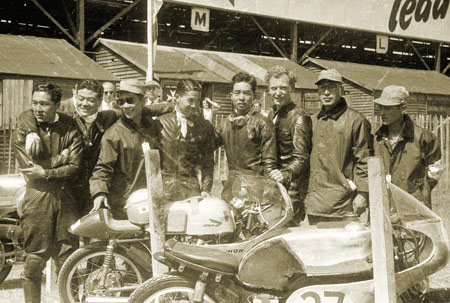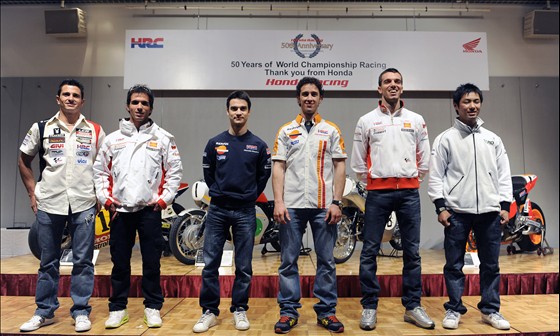EICMA 2010 NOVELTIES - TUONO V4 R
 From the bike which dominated the World Superbike Chanpionship, Aprilia extracts the fiercest naked ever seen.
From the bike which dominated the World Superbike Chanpionship, Aprilia extracts the fiercest naked ever seen.V4 162 HP engine, the most advanced chassis to attack any path, APRC electronic management to create a "customized" bike for every riding situation.
The heart racing, soul stirring naked.
After creating the best superbike of the new millennium, Aprilia revolutionises the supersports naked segment with its astonishing new Tuono V4R.
A bike that goes beyond the wildest dreams of even the most hardcore enthusiasts - the rider who, given the chance, would use a race bike just to go for a coffee.
For riders like these and for those with power in their veins, Aprilia has created a motorcycle with the indomitable spirit of the RSV4 in a feline body that is in its element when accelerating and braking with unimaginable violence, that eats up curves of any radius and swallows straights whole.
Characterised by the brazen exhibition of the V4 65° engine framed by the brushed aluminium elements of the dual beam frame, the Tuono V4 is a naked dressed with the bare necessities to mount up and instruct according to the rider's capabilities.
Adding yet another touch of aggressiveness is the aerodynamic new top fairing tipped with two polyelliptical headlights at the sharp end, which gives the bike the unequivocally mean, daunting stare that you'd expect from a machine with an incredible 162 horsepower.
Tuono V4R boasts power never before installed on a naked, obtained by reconfiguring the RSV4 Factory APRC SE four V cylinder.
The Tuono V4R inherits features from the Special Edition including the new exhaust system with bypass valve, which is two kilos lighter than the system used on the RSV4 R, and latest generation Ride by Wire throttle control.
Differences from its race track sibling are closer spacing between the three first gear ratios a maximum torque of 110 Nm on tap 1000 rpm lower.
The Tuono V4R maintains the family feeling with the WSBK double title champion's tail fairing, saddle, tank and side panels, one of the best examples of made in Italy motorcycle design in the last decade for its formal beauty and functionality ratio. The racer, because that is what anyone who approaches a fireball like this one should be called, will be taming this beast from a riding position tailored to create a symbiotic relationship between the body and the bike, for unparalleled feedback through the three points of contact - the saddle, footpegs and handlebars.
Staying in the saddle and gripping the biconical handlebar, the rider comes into contact with the APRC (Aprilia Performance Ride Control) joystick, the second generation electronic dynamics control package developed by Aprilia to get as close as possible to the physical limits of riding: State-of-the-art in bike dynamics performance controls, a patented system which makes the winning Superbike technology available to any biking enthusiast. All of this with absolutely simple and intuitive management which allows the Tuono V4R to be customised every time the rider gets on it, making it a truly "tailored" bike for each rider, the desired performance and the riding conditions.
APRC is based on an automotive inertia sensor platform, with two gyrometers and two accelerometers allowing the ECU to determine the dynamic state of the motorcycle and control engine torque accordingly to help the rider exploit the full performance potential of the bike in all conditions.
The APRC package includes ATC traction control (Aprilia Traction Control), with eight selectable levels, which controls sliding when accelerating out of a curve in relation to bank angle and throttle aperture, AWC (Aprilia Wheelie Control), which helps the rider control extreme wheelying by gradually bringing the front wheel back to the ground, and AQS (Aprilia Quick Shift), which allows instantaneous upshifts without closing the throttle or using the clutch. Completing the suite of four functions is the most exhilarating of all: ALC (Aprilia Launch Control).
Simultaneously pressing both buttons on the joystick on the left hand handlebar arms the system, as confirmed by the specific message on the display. From this moment on, all 162 horsepower of the beast from Noale are ready to slingshot the Tuono V4R like a missile as soon as the rider releases the clutch, unleashing the astonishing power onto the tarmac through every available square millimetre of the 190/50 rear tyre.
For every day street riding and for those who are not yet accustomed to the miracles of the vehicle's dynamics software, Tuono V4R offers great satisfaction from a biking hardware point of view.
In fact, the extraordinary new Aprilia naked is equipped with the best components available on the market: Brembo brake system with radial callipers and 320 mm floating discs at the front (220 mm at the rear), aluminium wheels with an all-new design weighing 2 Kg less than those on the RSV4R, Sachs upside down front fork with 43 mm stanchions coated with titanium nitride for reduced friction, and Sachs shock absorber with separate piggy back nitrogen canister featuring adjustable spring preload, compression and rebound damping and length, to modify the setup of the bike to suit different riding styles or for two-up use.
 APRILIA TUONO V4 R APRC: Technical specifications
APRILIA TUONO V4 R APRC: Technical specifications




























+HondaV4Concept-5.jpg)




















